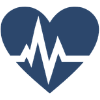
What Does a Respiratory Therapist Do?

Responsibilities
- Conduct breathing exams
- Measure lung capacity
- Draw blood samples and analyze blood oxygen levels to assess a patient's oxygenation and ventilation status
- Consult with a doctor to diagnose breathing conditions
- Develop treatment plans
- Administer oxygen
- Aid in life-sustaining interventions, such as operating ventilators and other respiratory support devices
- Manage breathing equipment and teach patients how to use it
- Conduct pulmonary rehabilitation
Becoming a Respiratory Therapist: FAQs
The bottom line:
This is a job ripe with opportunity. RTs are needed in many work settings, from hospital units for respiratory care, anesthesiology, neonatal intensive care or pulmonary medicine. Respiratory therapists are also needed in nursing care facilities and agencies that provide home health care. These types of facilities may be open 24 hours a day, which means your hours as a therapist may vary. This is typically a full-time job and one that requires you spend a lot of time on your feet.
If this sounds like an exciting career path, look below for more information about training opportunities in your desired area. Simply exploring training programs puts you one step closer to a new reality!

What's it like to be a respiratory therapist?
There are many reasons respiratory therapist Kimby Powell loves her job, but the biggest reason is that every day is an adventure — and a chance to help save lives.
"I love being able to help them with their breathing issues and to know that I have made a difference in their lives," says Kimby.
The respiratory care services supervisor at Bon Secours Maryview Medical Center in Portsmouth, Virginia, relishes her supervisory role, but she never loses sight of the reason she got into this line of work — to help people with breathing issues.
Plus, that's the part that's the most rewarding. So if you want a job that will "challenge you, make you grow, push you to your limits, inspire you, humble you and have you walking away feeling great satisfaction," read this respiratory therapist's story.
Are there certification requirements for this career?
Find Respiratory Therapist Training In Your Area
Need help reaching your goals?
Explore our Financial Resources page for scholarships, FAQ answers and student support services.

